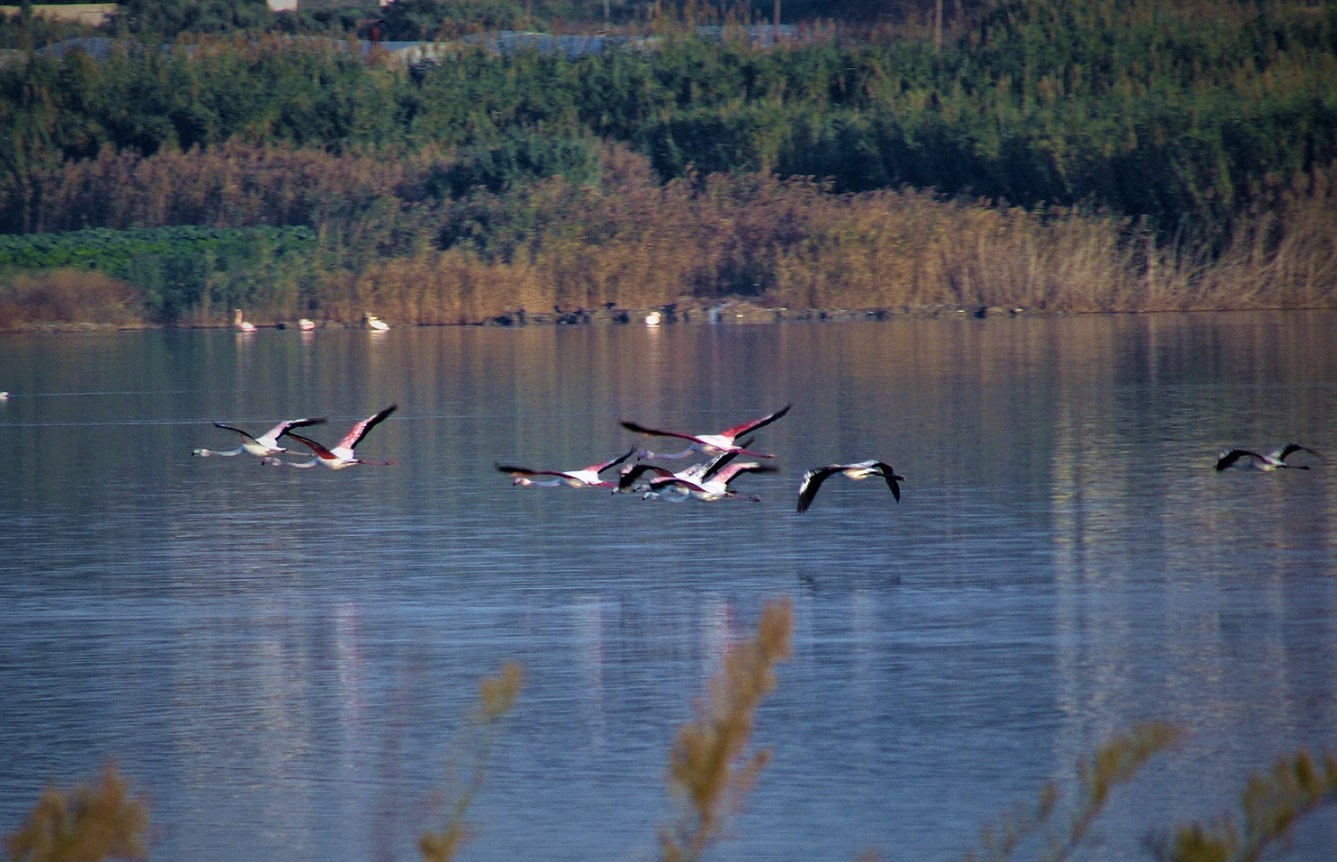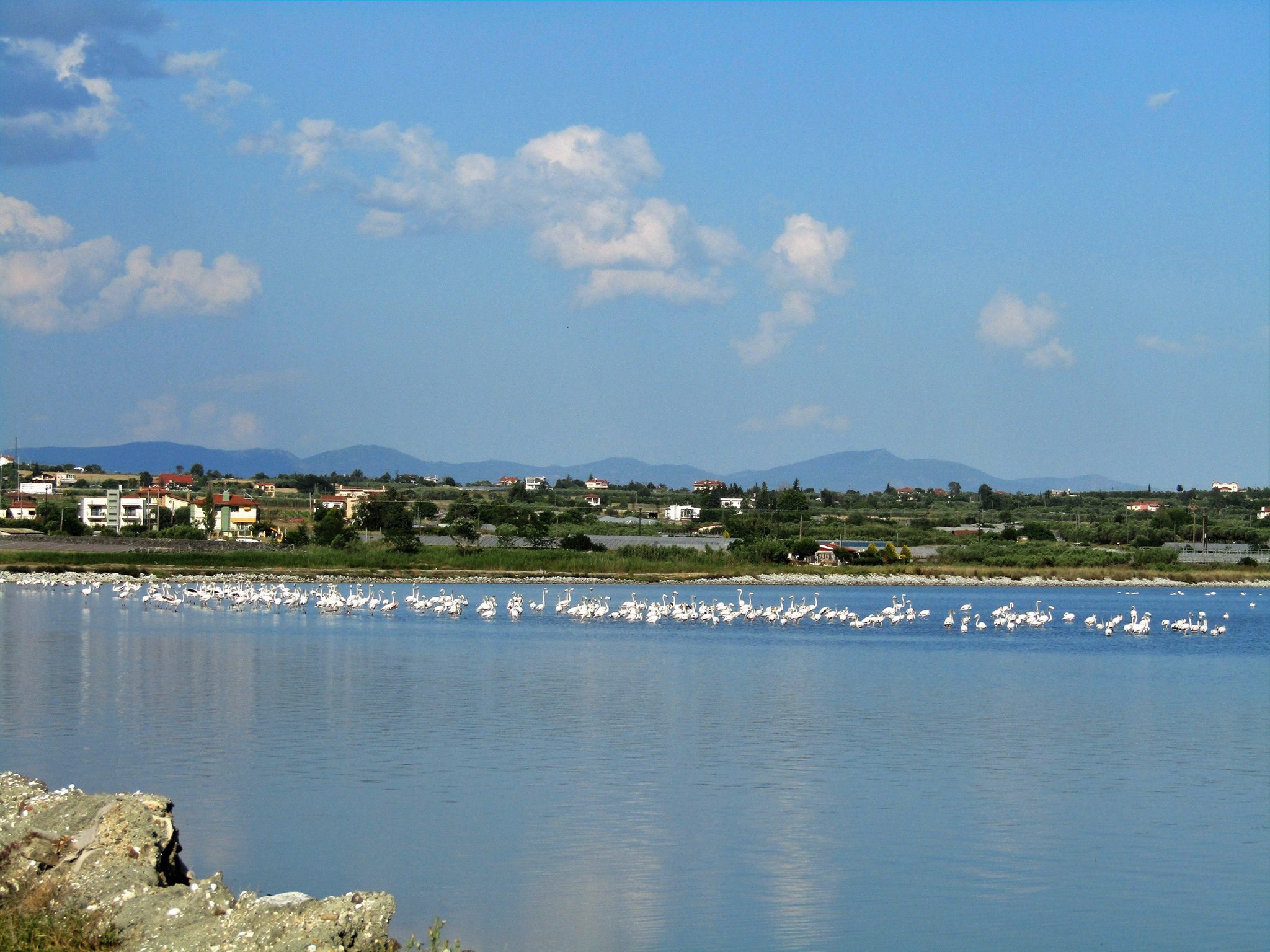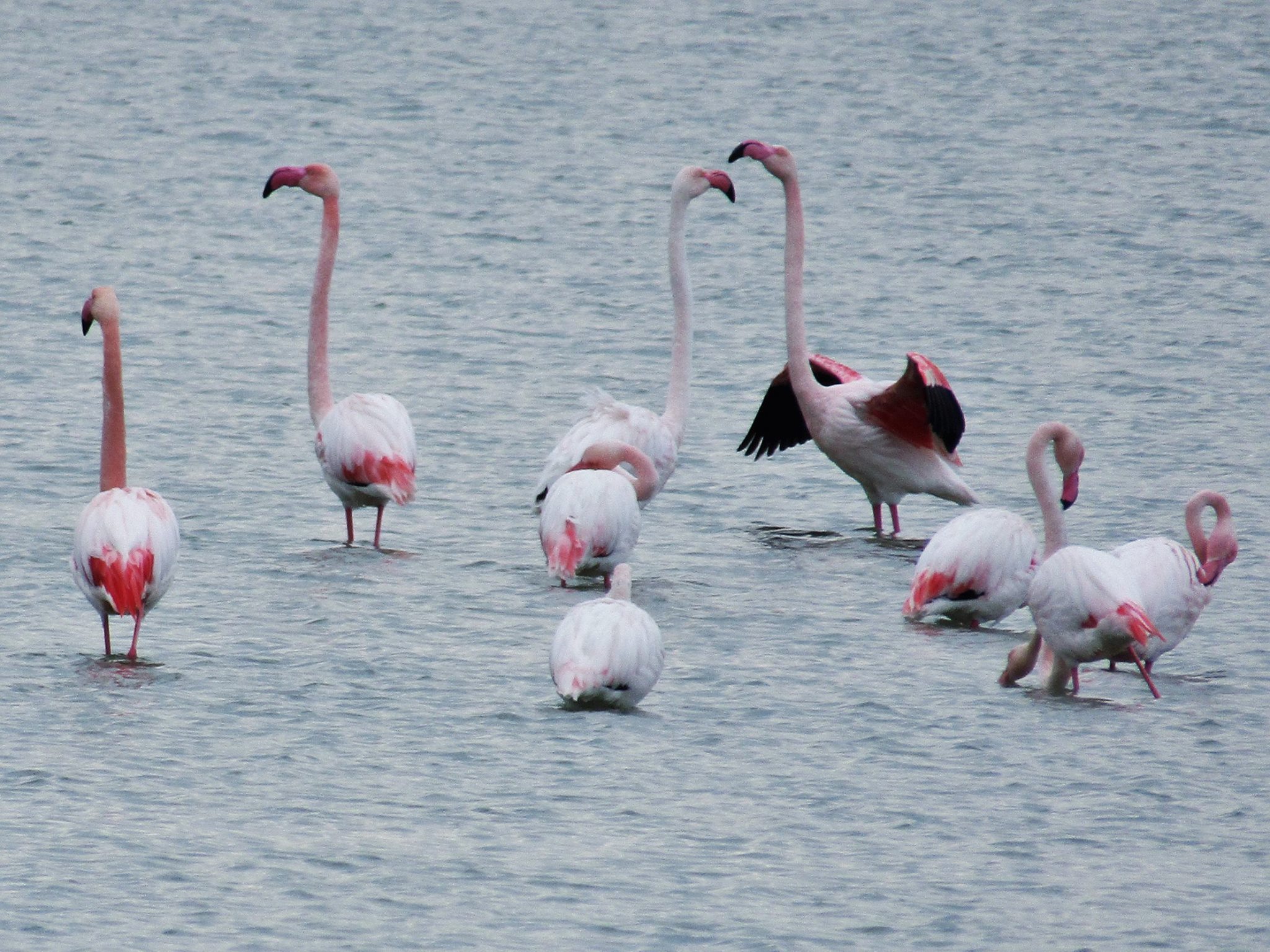The lagoon of Angelochori is a unique wetland of Northern Greece, which belongs to the Natura 2000 network and combines different types of habitats. Moreover, it offers the possibility of an easy day trip just outside Thessaloniki.
Located 30 km from Thessaloniki and accessible also by bus, Angelochori is a seaside village with 1,178 inhabitants (according to the 2011 census) and a history dating back to the years of the Ottoman occupation. Due to the salt marshes connected to the lagoon, the village became a salt production hub as early as 1902, which until the 1970s was exported with axes and shovels and then transported by horses.
The sandy beach of the village attracts visitors during the summer months, while the area is also frequented by surfing enthusiasts. However, it remains a rather unexplored destination for those not from Thessaloniki or the surrounding areas, although the lagoon is ideal for excursions throughout the year (provided the weather is good, of course).
The lagoon and its wetlands
Located 1km south-west of the village, the lagoon extends over a total area of 943 acres and is (approximately) square in shape. It is joined by salt marshes and separated from the sea (Thermaikos Gulf) by a narrow, sandy strip of coastline. The lagoon is very shallow and is characterised by a rich flora, full of reeds, sea lilies, bulrushes and asphodels.
The importance of the lagoon lies in the fact that it is a stopover and feeding ground for a large number of waterfowl and wading birds. Its rich avifauna offers unique images of exceptional beauty. Flamingo populations, for example, offer a spectacular sight – especially in winter, when the largest concentrations are usually recorded. However, it’s also worth checking out other- of the 178 or so- bird species that live in or pass through the area, so be on the lookout for the collar pratincole, glossy ibis, black winged stilt, avocet and the Eurasian spoonbill.
Apart from the birds, the lagoon is home to other species that are of particular interest to the observant visitor. Despite its shallow depth, for example, it is home to at least 12 different species of fish, including some rare ones such as the Mediterranean killifish and the pipefish. Note also that the seabed is covered by meadows of the protected species Posidonia Oceanica – a seagrass species endemic to the Mediterranean- which is home to the impressive bivalve molluscs known as Pinna. The latter are endangered and, therefore, fishing for them is strictly prohibited.
In addition, on the lagoon’s shores, one may see European ground squirrels, badgers and hedgehogs, as well as other species protected by the European union such as the European green toad and the 2metres long four-lined snake, which, although frightening, is harmless, non-venomous and clearly impressive as one of the largest in all of Europe. Watch out also for the rare bobcat, which is included in the Red Book of Endangered Animals of Greece and protected by international conventions.
Other sights in Angelochori
Despite the impressive landscapes and the unique flora and fauna, the lagoon is not the only attraction in Angelochori. Once there, you should visit the famous salt pans of the area, as well as one of the most famous well preserved lighthouses in Greece and the Austro–Ottoman castle.
The salt pans
They are located in the northern part of the lagoon and, although artificial, they are in perfect harmony with the natural landscape that surrounds them. They also contribute to the wider ecosystem, both by providing water to the surrounding area and by maintaining marine life in the lagoon itself.
The lighthouse
Made of solid cinder blocks like the chimneys of the industrial buildings of the 19th century, it stands on Cape Megalo Karambournou (meaning “piston” in Turkish) and is one of the 27 lighthouses of the Greek territory that has been declared a listed monument of Modern Industrial Heritage.
The Austro-Ottoman castle
It was built in the period 1883-1885, almost next to the (pre-existing) lighthouse, by engineers who came to Angelochori from the Austro-Hungarian Empire by order of the Ottoman authorities.
The latter considered that this point was of great strategic importance, for the control of both the Thermaikos and the traffic to and from Thessaloniki, so they decided that a strong fortress should be built. In 1915 it came under the control of the Greek state, but remained unused, and over the years it was often looted for free building materials.









